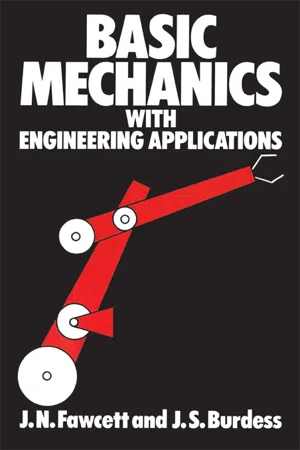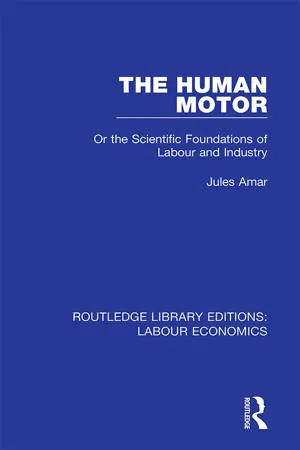Physics
Dynamics
Dynamics in physics refers to the study of forces and motion, particularly how objects move and interact with each other. It involves analyzing the causes of motion and the effects of forces on objects. Dynamics encompasses concepts such as acceleration, velocity, and the laws of motion formulated by Isaac Newton.
Written by Perlego with AI-assistance
Related key terms
3 Key excerpts on "Dynamics"
- eBook - ePub
Engineering Science
For Foundation Degree and Higher National
- Mike Tooley, Lloyd Dingle(Authors)
- 2013(Publication Date)
- Routledge(Publisher)
Part II Dynamics In this part of the book we consider the dynamic behaviour of bodies, that is, the motion of bodies under the action of forces. The study of Dynamics is normally split into two major fields, kinematics, the study of the motion of bodies without reference to the forces that cause the motion, and kinetics, where the motion of bodies is considered in relationship to the forces producing it. With the exception of the study of mechanisms in Chapter 9, we will not, in this short study of Dynamics, differentiate a great deal between these two areas, rather concentrating on the macroscopic effects of forces and resulting motions in dynamic engineering systems and machinery. We start our study of Dynamics in Chapter 8 by looking at a number of fundamental concepts concerning linear and angular motion and the forces that create such motion, including a review of Newton’s laws. We then consider momentum and inertia, together with the nature and effects of friction that acts on linear and angular motion machines and systems. Next, mechanical work and energy transfer are considered and their relationship to linear and angular motion systems is explored. Finally in Chapter 8, as a prelude to rotating machinery in Chapter 10, we take a brief look at circular motion and the forces created by such motion. In Chapter 9, we first consider the motion of one or two single and multilink mechanisms. In particular, we look at the nature of the relative velocities and accelerations of these mechanisms, together with the power and efficiencies of particular engineering machines that utilise such mechanisms. Then, very briefly, we consider the geometry and output motions of various types of cams. We will then look at a number of gyroscopic motion parameters, in particular gyroscopic rigidity, precession and reaction torque - eBook - ePub
- J. Jones, J. Burdess, J.N. Fawcett(Authors)
- 2012(Publication Date)
- Routledge(Publisher)
4DynamicsBasic Theory4.1 Dynamics of particles and rigid bodiesNewton’s Laws refer only to particles. We will therefore consider first the motion of a particle and later develop methods for dealing with the motion of rigid bodies. The approach is similar to that used in our study of kinematics where we started with the motion of a point, and then proceeded to consider rigid body motion.4.2 Dynamics of a particleThe motion of a particle under the action of applied forces obeys Newton’s Second Law. Hence, if we know the magnitudes and directions of the forces acting on a particle, its acceleration can be found. Conversely, if we know the acceleration of a particle from kinematic considerations, it is possible to find the total force acting on the particle.For a particle moving in a plane the general equation,F = mamay be expressed in components which are at right angles, e.g.where Fx , Fy and , are the components of F and a along the directions OX, OY of a Cartesian frame of reference.Example 4.1 Consider a particle P of mass m moving on a smooth horizontal table. Let the particle be restrained by a string which has one end fixed, so that the particle moves in a circular path of radius r, as shown in Fig. 4.1 . If ν, the magnitude of the velocity of the particle, is maintained constant, let us obtain an expression for the force in the string.In this case we can obtain the acceleration of the particle from kinematic considerations. A point moving in a circular path has an acceleration (see p. 16)In this case the magnitude of the velocity of the particle is constant so that = 0. The acceleration of the particle is therefore towards the centre of the path and its magnitudeWe now draw the free body diagram of the particle showing only the forces acting on the particle. Let us assume that there is a tension T in the string in the direction shown in Fig. 4.2 - eBook - ePub
The Human Motor
Or the Scientific Foundations of Labour and Industry
- Jules Amar(Author)
- 2018(Publication Date)
- Routledge(Publisher)
THE HUMAN MOTOR.
BOOK I.
GENERAL PRINCIPLES OF MECHANICS.CHAPTER I.
1. General.—A consideration of the general laws of mechanics is an indispensable preliminary to the study of any machine (animate or inanimate). It is only thus that the problems involved in equilibrium and movement can be properly appreciated.The subject of mechanics is generally divided under three heads:— 1. Kinetics. (The study of movement in itself). 2. Statics. (The study of the equilibrium of forces). 3. Dynamics. (The study of force in action).Such subdivision is both simple and logical. It does not exclude consideration of all the physical properties of the bodies under study. Mechanics in the practical department, to which the term “Applied Mechanics” is given, specifically takes account of all such properties, and especially of the deformation caused by the application of forces. It further deals with the strength of materials and the limiting stresses which solid bodies can sustain.A clear understanding of the mechanism of human activity is not possible without some general knowledge of the above laws. The writer has therefore thought it necessary to devote the earlier pages of this work to the subject of mechanics in general, both in order to give completeness to the discussion and also to save the reader the inconvenience of having frequently to refer to textbooks and other works of reference.2. (1). Kinetics.—When we see a body change its place, we say that it is moving and we imply that it has been stationary. In reality, all movement is relative and is reckoned by comparison of the body which moves, with another body, which serves as a datum. A man walking moves, relatively to the earth surface, the earth itself being in motion. The earth is moving relatively to the sun, while the sun also moves in space.Let the moving body be considered as a point. In moving, the point traces out a path which may be straight or curved. Its motion is either uniform or variable according as to whether the space passed over in equal intervals of time is the same or differs from time to time in its progress.
Learn about this page
Index pages curate the most relevant extracts from our library of academic textbooks. They’ve been created using an in-house natural language model (NLM), each adding context and meaning to key research topics.


